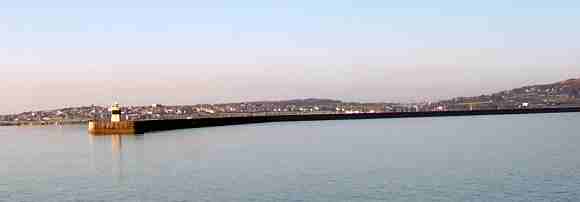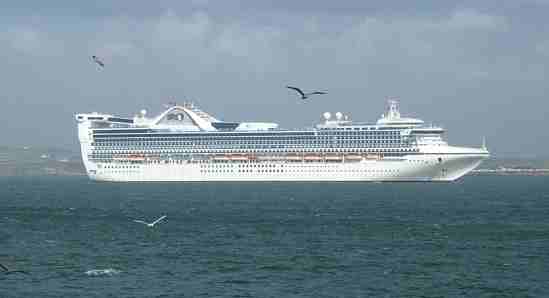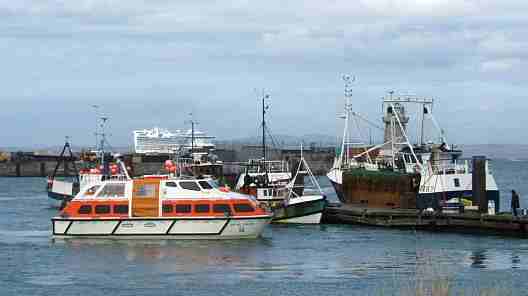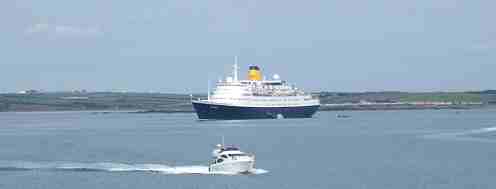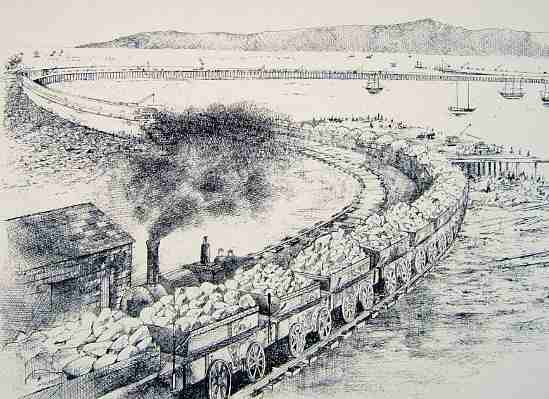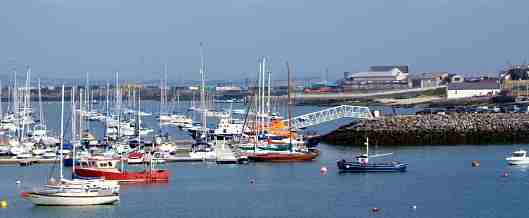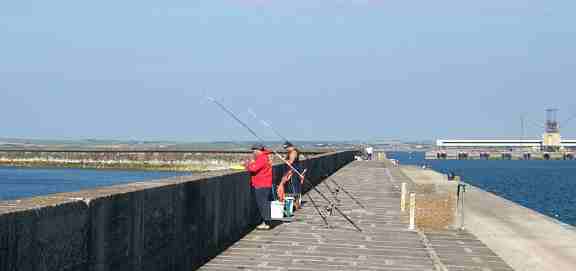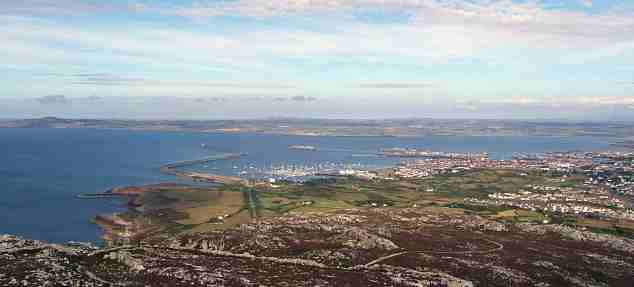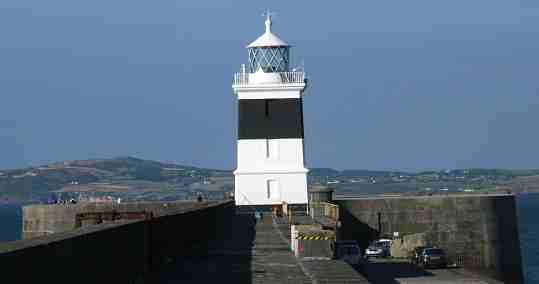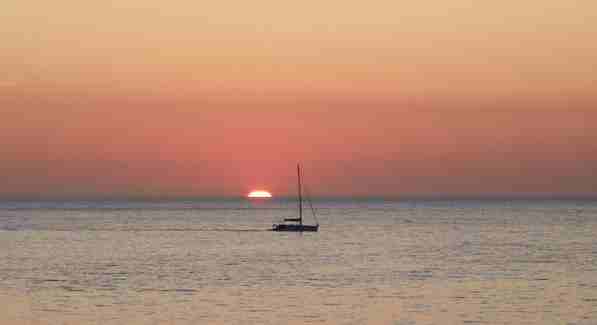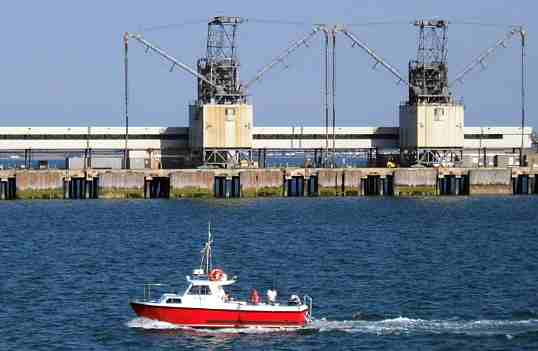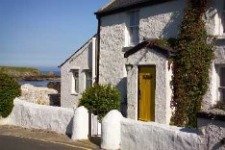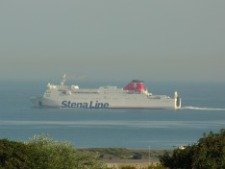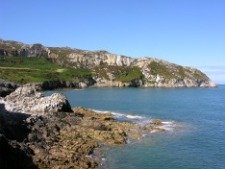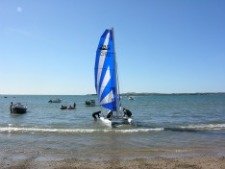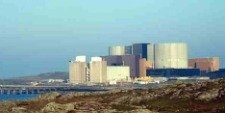|
Holyhead Breakwater, longest in Britain
When a visitor to Holyhead approaches Newry beach, the massive, solid Holyhead Breakwater is almost certainly the first feature they will notice.
Holyhead Breakwater, stretching from west to east dominates the view as you look northwards from Newry Beach promenade or "The Prom" as we say here.
You cannot fail to be impressed by its sheer presence, all 1.48 miles (2.39 km) of solid stone from the old Holyhead quarry, nearby. And at the eastern end is a lighthouse to warn shipping, as they approach the harbour.
Golden Princess Cruise Ship off Holyhead Breakwater The Golden Princess cruise ship is seen below anchored to the east of the Breakwater during her visit here on Friday, 1 September 2006. A huge vessel dwarfing the regular Holyhaed to Dublin Ferry let alone the smaller High Speed Ships (HSS). Nearby there was an RAF helicopter carrying out exercises, with a man in the water just off the Rio Tinto jetty.
Saga Ruby Cruise Ship off Holyhead, 5 August 2006
I have always been fascinated by the change in appearance of Holyhead Breakwater, this great Grade 2 structure, as the tides change. At high water, a long thin wall which you could almost jump over without noticing.
And yet at low tide, with more of the foundations exposed and seaweed visible, Holyhead Breakwater presents a formidable obstacle in the minds eye.
Often during the fierce north westerly storms in the winter season, as school children we would regard crossing Holyhead Breakwater as the supreme challenge.
With almost clockwork regularity a massive wave would strike this structure causing a thunderous sound and vibration. We would shelter in the small alcoves built into the lower section, waiting for the right time to move on.
This was the exciting bit, trying to avoid being completely drenched by a massive wall of water descending from above.
For viewers from the main beach, near Holyhead Coastguard station these views can be spectacular, if you can stand up in the wind, that is.
I often remember trying to take photos of the Holyhead to Dublin Ferry as she made her way slowly past Holyhead Breakwater, cutting her way through the turbulent sea, and the air filled with foam.
Knowing the power of the sea and the size of the waves in Holyhead Bay, I try to imagine what Newry Beach and Holyhead would be like without this impressive protective stone "blanket".
Of course, if the wind is from the west or south west, the natural shape of this coastline acts as shelter for shipping, but anything blowing north of west and it's quite different.
Records show that original plans were made for there to be two breakwaters. One to run from Soldier's Point (as it does today) and the other from Salt Island.
Building started in 1845 underr the direction of engineers, James Meadows Rendel and John Hawkshaw, and 18 years later on 19th August 1873 the breakwater was completed. During the course of this work, the plans changed. Instead of running in an easterly direction, the wall shifted to point to the north east. As you can see from the picture below (taken from Holyhead Mountain), this change of direction had the effect of widening the harbour over the last third of the breakwater.
If you visit Holyhead Country Park you will see the old quarry works where stone for building Holyhead Breakwater was taken in wagons along a specially constructed railway line. A special staging made from Quebec Pine was constructed to carry the wagons.
Standing on the breakwater today, it's amazing to think that the engineers used boxes attached to the base of the piles and filled them with stone. With 1,500 men working in shifts day and night, four locomotive engines were used on site.
Fast forward to 2006 and the concern is about the crumbling of this great structure and the need for remedial action. Up to a few years ago a train used to shunt wagons loaded with stone blocks to the lighthouse end of the wall and drop them over the north (outer) wall.
Now the railway line has been removed from the lower section of Holyhead Breakwater and serious erosion at a number of sections is a cause for concern.
Recently, the owner of the breakwater, the Stena Shipping Company, owner of one of the Holyhead to Dublin ferries, suggested building a mini-offshore wind farm nearby.
Revenue from electricity generated here would pay towards repairs to the breakwater. This idea seems to have recieved a rather cool reception from the people of Holyhead.
Walking along the Holyhead Breakwater, from Soldier's Point to the lighthouse at the end, is a great form of exercise. And as you go along you can see so much of interest.
For example, looking north you can see the Skerries lighthouse and Carmel Head, and the National Trust coniferous forest which runs down to join the Anglesey Coastal Path at Mynachdy.
Then there's all the activity in the outer harbour itself. You're likely to see yachts coming and going from the new and expanding Trinity Marina, and sailing dinghies being launched from Holyhead Sailing Club.
There is a large number of yachts moored in Holyhead harbour and near the MacKenzie Pier is the Holyhead Towing Company and the Maritime and Coastguard Agency (MCA).
Further along on the eastern side of the harbour is Salt Island where you can see the old lifeboat hut and the Rio Tinto Anglesey Aluminium jetty. Occasionally, a ship will dock here carrying alumina from the Carribean and Far East which is then passed by conveyor to the smelter nearby.
Holyhead Breakwater is also a great favourite with anglers, and you will often see enthusiasts gearing up for a competition or just there because they enjoy fishing as a pastime.
Fishing off the inner wall is apparently easier because you avoid the rocks and boulders on the seaward side which can snack the lines.
So if you like walking or cycling or fishing, then you'll do well to make a priority to visit Holyhead Breakwater. And there is a possibility that the lighthouse may reopen. And with the Road Train already doing trips from the town to the lighthouse, this seems a logical next step.
One thing I would caution against is trying to swim off the Holyhead Breakwater. On the northern side there are rocky outcrops and strong tidal currents, while along the harbour side there may be submerged hidden objects which may cause injury.
Besides you may get bitten by a conger eel!
Return to Attractions from Holyhead Breakwater Anglesey Today |





